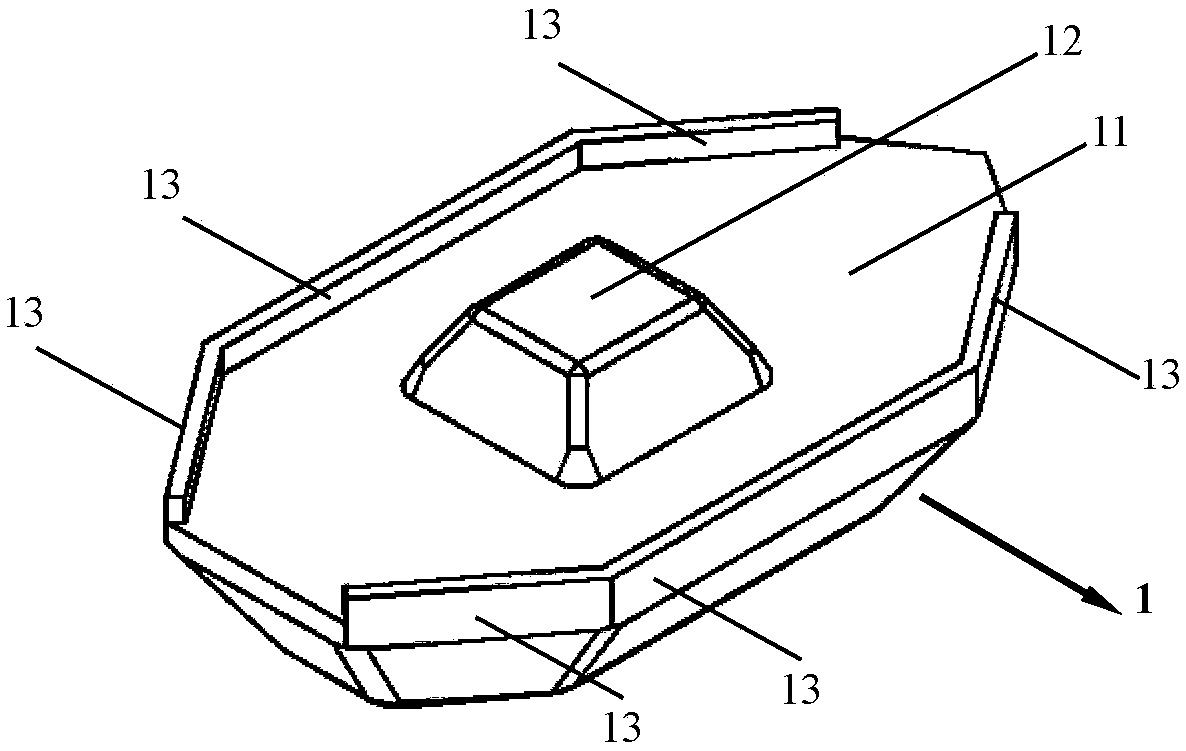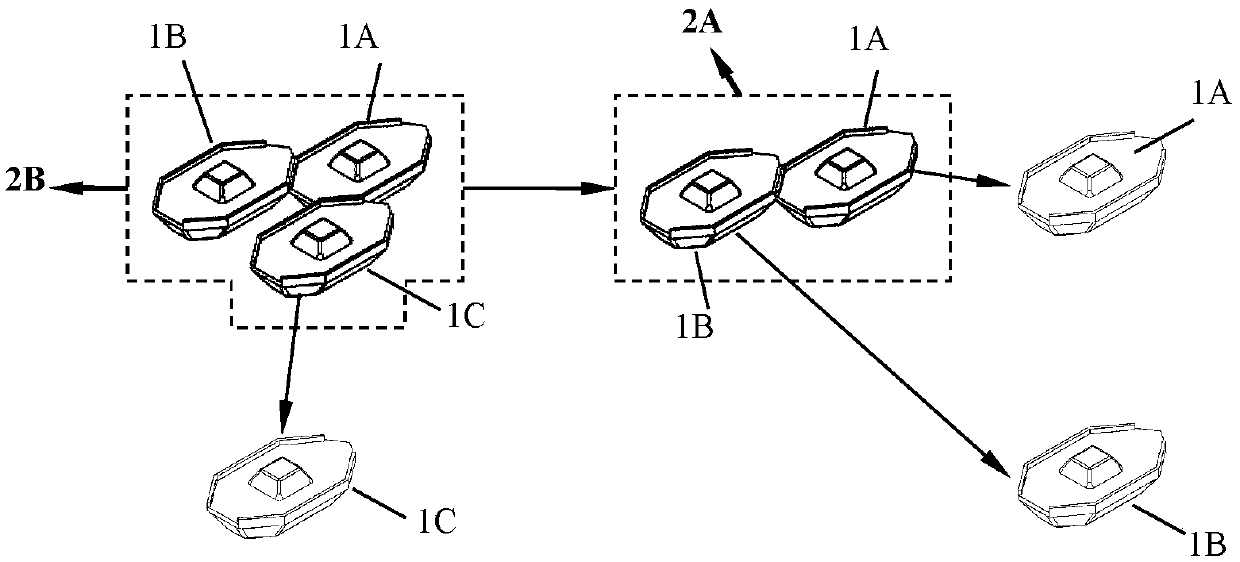Combined unmanned observation ship
A technology for unmanned ships and boats, applied in the field of ships, can solve the problems of high manufacturing and procurement costs, waste of resources, poor ability to resist wind and waves, etc., to increase safety and reliability, save scale and cost, and avoid collision accidents. Effect
- Summary
- Abstract
- Description
- Claims
- Application Information
AI Technical Summary
Problems solved by technology
Method used
Image
Examples
Embodiment Construction
[0026] In order to further understand the invention content, characteristics and effects of the present invention, the following examples are given, and detailed descriptions are as follows in conjunction with the accompanying drawings:
[0027] The present invention is a combined unmanned observation ship, which is a combined unmanned ship obtained by assembling and integrating multiple unmanned ship subsystems 1 . The joint unmanned ship refers to a dockable, separable and cooperative system formed by connecting two or more independent unmanned ship subsystems 1 in any way. Compared with the single unmanned ship subsystem 1, the joint unmanned ship can sail a longer distance, has a higher ability to resist sea conditions, carries more task loads, and performs more tasks at the same time. efficiency, lower subsystem complexity and manufacturing cost.
[0028] Such as figure 1 As shown, the unmanned ship subsystem 1 includes a hull 11 , a control cabin 12 and a docking devic...
PUM
 Login to View More
Login to View More Abstract
Description
Claims
Application Information
 Login to View More
Login to View More - Generate Ideas
- Intellectual Property
- Life Sciences
- Materials
- Tech Scout
- Unparalleled Data Quality
- Higher Quality Content
- 60% Fewer Hallucinations
Browse by: Latest US Patents, China's latest patents, Technical Efficacy Thesaurus, Application Domain, Technology Topic, Popular Technical Reports.
© 2025 PatSnap. All rights reserved.Legal|Privacy policy|Modern Slavery Act Transparency Statement|Sitemap|About US| Contact US: help@patsnap.com



